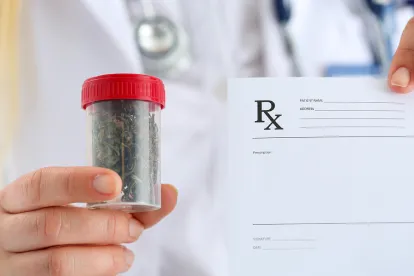The New York State Department of Health’s (DOH’s) two-year report on the progress of its medical marijuana program revealed a 1,124% increase in certified patients registered under the program. Released in mid-November, the report attributes the program’s rapid growth to legislative developments making medical cannabis more accessible to patients.
The new regulations promulgated over the past two years include:
-
Permitting nurse practitioners and physician assistants to certify patients for medical marijuana
-
Increasing the number of organizations registered to manufacture and dispense medical marijuana
-
Expanding the list of qualifying conditions to include chronic pain, PTSD and any condition for which an opioid may be prescribed
-
Allowing registered organizations to wholesale to other registered organizations.
The data in the report was obtained through June 30, 2018. As of that date, there were 98,101 total certifications, of which 61,198 patients were actively certified. There were 1,723 registered practitioners; nurse practitioners and physicians assistants constituted 21.6% of the total practitioners in the program.
Patients aged 51−60 make up the largest percentage of certified patients at 23.06%, while 61−70-year-olds make up the next largest group at 19.21%.
A recent visit to the DOH website shows that as of November 27, 2018, there are 82,119 active certified patients – a 20,000 patient increase in just five months.
Signed into law on July 7, 2014, New York’s Compassionate Care Act established a medical marijuana program, permitting certified patients to purchase medical marijuana from registered organizations. The list of qualifying conditions for which practitioners can recommend medical marijuana include cancer, positive status for HIV or AIDS, amyotrophic lateral sclerosis (ALS), Parkinson's disease, multiple sclerosis, damage to the nervous tissue of the spinal cord with objective neurological indication of intractable spasticity, epilepsy, inflammatory bowel disease, neuropathy, chronic pain, PTSD, Huntington’s disease or any condition for which an opioid could be prescribed.
The most common qualifying condition is chronic pain at 53.13% of all certified patients. Neuropathies were the second most common at 14.59% of all patients.
To improve the availability of medical marijuana to patients in need, the DOH made several recommendations, including:
-
Affording practitioners more clinical discretion in determining whether or not to certify patients based on an evaluation of the patient’s condition, past treatment and overall risks versus benefits
-
Permitting all prescribers of controlled substances to participate in the program
-
Implementing an initiative to educate practitioners and the public on the benefits of medical marijuana
-
Increasing the number of caregivers for each certified patient to five
-
Conducting a pilot study with one or more third-party payors to demonstrate the effects on consumption and costs in patients who are taking medical marijuana.
With the rapid growth of New York’s medical marijuana program and other state programs across the country, medical malpractice carriers must understand the risks and educate their doctors about best practices for recommending medical marijuana.



 />i
/>i

